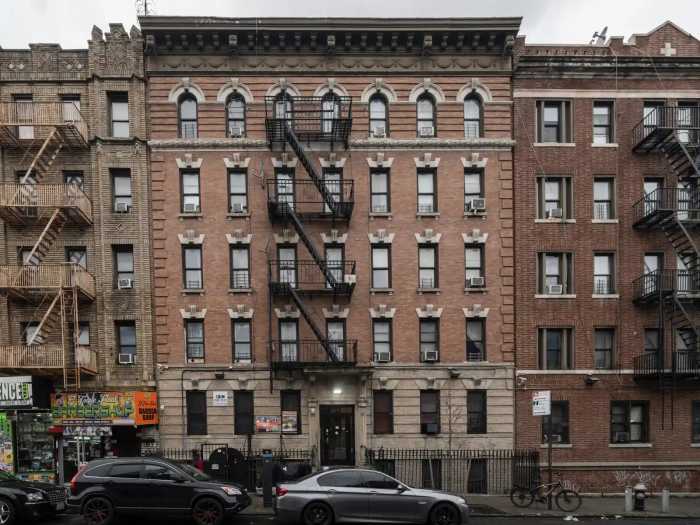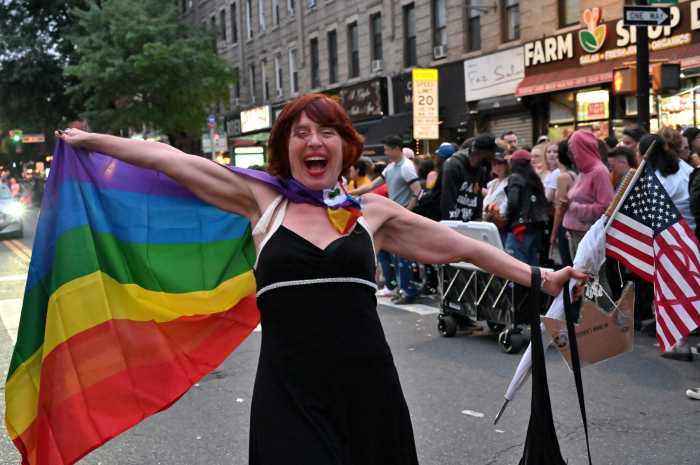By Elizabeth O’Brien
Shaded areas mark proposed new John St./Maiden Ln. historic district.
Community Board 1 members voiced doubts last week about a proposed historic district around John St. and Maiden Lane, saying they need time to consider a plan that could hamper the rebuilding process.
The Historic Districts Council, a New York City preservation advocacy group, announced to community board members on Dec. 11 that a John Street/Maiden Lane historic district had been declared eligible for listing on the New York State Register of Historic Places.
C.B. 1 members said they were stung that preservationists didn’t seek their input before applying to the New York State Office of Parks, Recreation and Historic Preservation. The preservation-minded board found itself taking an unusual, antagonistic stance against its “constant ally,” as last week’s C.B. 1 resolution called the Historic Districts Council.
“There are lot of complicated issues here so to be presented this as a fait accompli is a surprise to a board so involved in preservation issues,” said Bruce Ehrmann, chairperson of the landmarks committee of C.B. 1, in a telephone interview.
The proposed historic area is bounded by Broadway on the west, Nassau or Dutch Sts. on the east, Fulton St. on the north and Liberty St. on the south. Part of the area will include the future Fulton Transit Center on Broadway, between Fulton and John Sts.
Much, if not all, post-9/11 rebuilding involves the use of public funds, and community board members fear that a historic designation would bring increased government oversight that could hinder the rebuilding process. Members also objected to the size of the proposed district, calling it unnecessarily large.
“We need to balance reconstruction issues with preservation issues,” Ehrmann said.
The Downtown Alliance, which runs a business improvement district, was similarly unenthusiastic about the designation.
“We have serious concerns about a broad brush approach to historic preservation in that area that would undermine the revitalization of Lower Manhattan,” said Jen Hensley, director of intergovernmental and community affairs for the Alliance, in a statement. Hensley is a also a member of C.B. 1.
While the John Street/Maiden Lane district has not yet been named to the New York State Register of Historic Places, its very eligibility for inclusion will trigger a review whenever state or federal funds are used to develop inside the designated area, according to Wendy Gibson, a spokesperson for the New York State Office of Parks, Recreation, and Historic Preservation.
Even so, the protection offered historic properties by the state is much weaker than that afforded by the city’s Landmarks Preservation Commission. The New York State Historic Preservation Office seeks to mitigate the impact of development on its historic properties, but this isn’t always enough to save even those buildings that make it onto the register.
For example, although the Greek revival building at 211 Pearl St. was deemed eligible for inclusion on the state’s historic register, most of the building was torn down last spring to make room for a residential tower. The thin sliver of facade that remains as a concession to preservationists could still be demolished later on if the developer submits another proposal for state review, Cathy Jimenez, a spokesperson for the New York Office of Parks, Recreation, and Historic Preservation, said last spring.
In withholding its support for the proposed district, community board members spent about as much time discussing the Historic Districts Council as they did the possibility of a John Street/Maiden Lane historic district. Last week’s resolution stated that a possible John Street area historic district had been under consideration before Sept. 11, 2001, but that board members had assumed plans had stalled after the terror attacks.
“After the shattering events of Sept. 11, 2001, the community board heard not another word about this proposal until last month, at which time the Historic Districts Council made a presentation concerning its efforts to revive a possible designation,” the resolution stated.
Simeon Bankoff, executive director of the Historic Districts Council, said he thought he had forwarded correspondence between the council and the State Historic Preservation Office to the community board, and that he was sorry when he realized that he hadn’t after all.
“That’s one of those cases where I feel terrible,” Bankoff said.
Bankoff said he understood the community’s concerns about the proposed district. However, Bankoff said that a state historic designation does not put any restrictions on the property, and that owners can decide whether to honor the designation or not.
By seeking inclusion on the state historic register, the Historic Districts Council hopes to raise awareness about the area’s architectural richness, Bankoff said. Lower Manhattan is home to the country’s earliest surviving skyscrapers, including the vaunted Corbin building at 11 John St. The Metropolitan Transportation Authority agreed in October to spare the Corbin building, which stands at the heart of the future transit hub.
Other examples of fine architectural detail include 17 John St., a building with tragedy and comedy mask sculptures on its façade.
To appreciate the architecture, “people just need to look up, is what it’s about,” Bankoff said.
In its efforts to support the area, the Historic Districts Council has teamed up with the nonprofit Preservation League of New York State, which last week named the proposed John Street/Maiden Lane historic district one of its “Seven to Save,” a list of New York’s most threatened historic places.
Preservationists ultimately hope to secure city landmark designation for the John Street/Maiden Lane historic district, Bankoff said. He said he understood why Community Board 1 would not support more stringent protections in the midst of the rebuilding. With city landmark status, owners must secure approval from the city before doing any substantive work on their property.
But even city designation cannot stand in the way of the government’s right to seize property for public works under the right of eminent domain.
Reader Services































